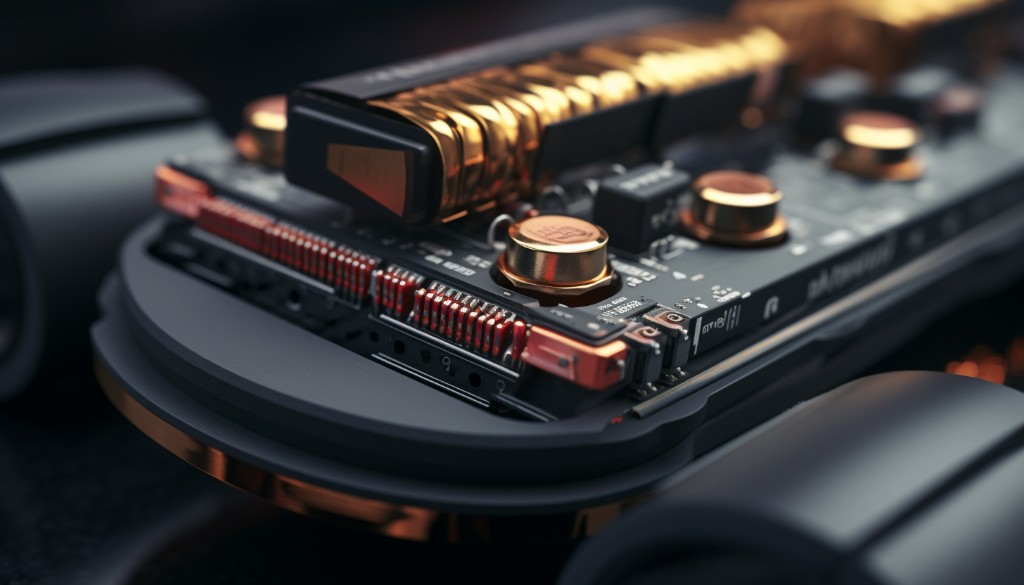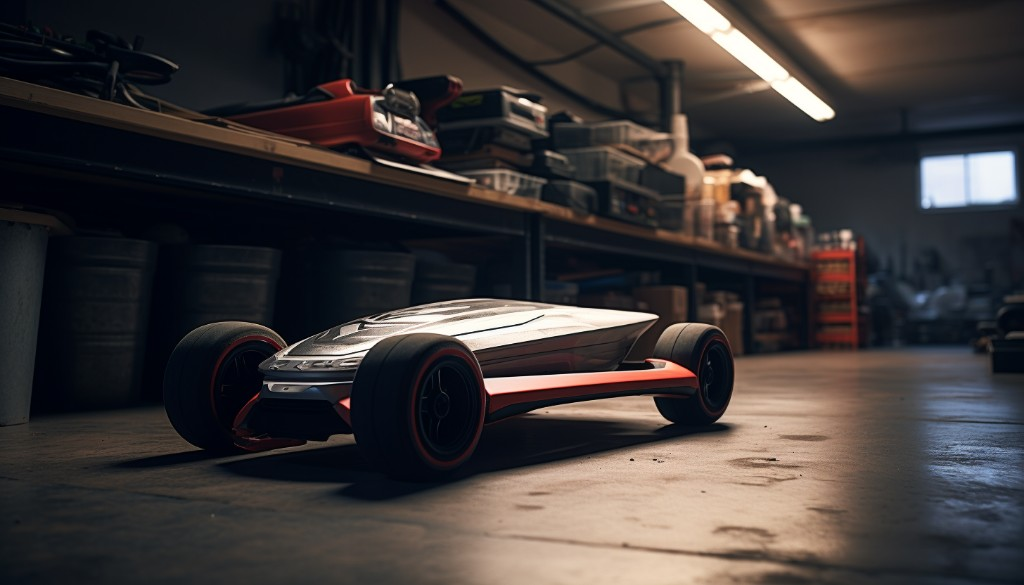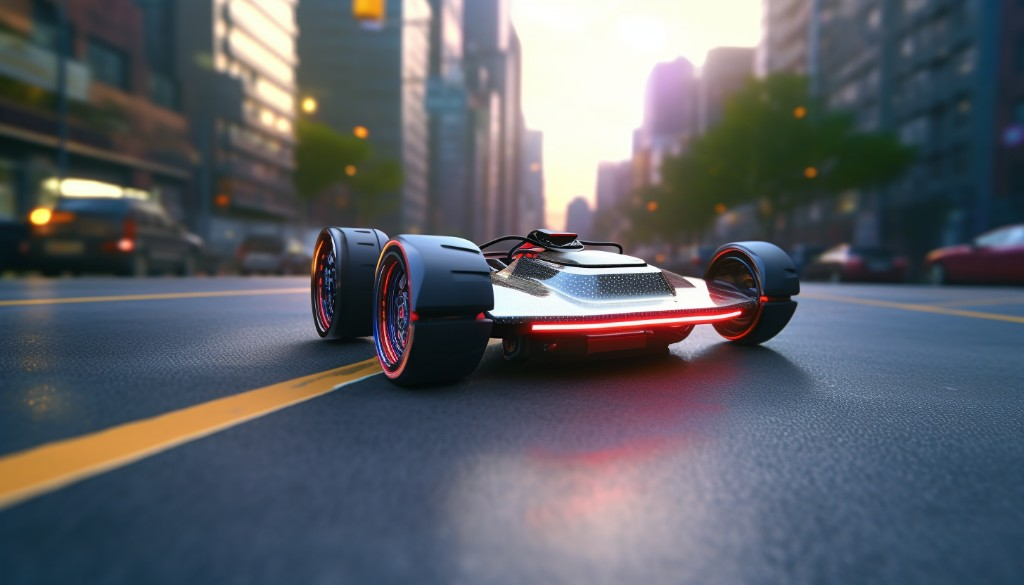Charging an electric skateboard seems like a no-brainer, right? Plug it in, wait for the battery to fill up, and you’re good to go. However, as straightforward as it may seem, the reality is a tad more complex. This article will guide you through the nuances of charging your electric skateboard, offering insights into battery understanding, optimal charging times, and even how to troubleshoot when things go awry. Knowledge is power – and in this case, literally so!
What we’ll cover
- Grasping Electric Skateboard Batteries
- Ideal Skateboard Storage
- Optimal Charging Times
- The Charging Process
- Power Bank Charging
- Charging Duration
- Battery Maintenance
- Troubleshooting Tips
- DIY Charging Fixes
- Seeking Professional Help
- Preventing Charging Issues
- Impact of Incorrect Charging
- Other Malfunction Reasons
Let’s jump right in and ensure you’ll never be left stranded with a dead skateboard again!
Understanding Electric Skateboard Batteries
Let’s dive right into the heart of the matter – the electric skateboard battery. This is the lifeblood of your ride, and knowing how it works can be incredibly useful. Not all batteries are created equal, with some being more efficient, durable, or powerful than others.
There are typically two types of batteries used in electric skateboards: Lithium-Ion (Li-ion) and Lithium-Polymer (Li-Po). Li-ion batteries are more common due to their long lifespan and high energy density, making them perfect for extended rides. Li-Po batteries, on the other hand, have a higher discharge rate which can provide a significant power boost when needed. However, they usually don’t last as long as Li-ion batteries.
To charge your battery, you’ll typically need to connect it to a charger that’s specifically designed for your skateboard’s battery type. It’s essential to use the correct charger as using an incorrect one can damage the battery or reduce its lifespan.

Differences Between Typical and Evolve Batteries
The Evolve brand is known for its high-quality electric skateboards and their batteries are no exception. Compared to typical electric skateboard batteries, Evolve batteries have a few key differences.
Firstly, Evolve uses custom-designed Li-ion batteries that offer extended range and enhanced performance. These batteries have a higher energy density compared to typical Li-ion batteries, which means you can ride longer on a single charge. However, they also tend to be more expensive.
On the flip side, typical electric skateboard batteries are often more affordable and easier to replace due to their widespread availability. However, they may not offer the same level of performance or lifespan as Evolve batteries.
Lifespan of Electric Skateboard Batteries
The electric skateboard battery lifespan can be quite variable, depending on several factors. On average, you can expect your battery to last between 500 to 1000 full charge cycles. This roughly translates to a lifespan of 2-3 years if you’re charging your board every day.
Battery capacity is a critical factor that affects the lifespan. A higher capacity battery will last longer as it doesn’t need to be charged as frequently. Additionally, how you use and maintain your battery can significantly impact its lifespan. Overcharging, deep discharging, and storing the battery in extreme temperatures can all shorten its life.
Best Practices for Electric Skateboard Storage
You’ve had a great ride, and now it’s time to put your electric skateboard away. But wait! Proper storage is not just about finding a place to stash your board. It can significantly affect the longevity and performance of your skateboard.
Firstly, it’s important to store your skateboard in a dry and cool place. Moisture can damage the electronics, while excessive heat can deteriorate the battery. Avoid leaving your board in direct sunlight or in a hot car for extended periods.
Secondly, if you’re not planning on using your skateboard for a while, it’s best to store it with the battery partially charged – around 50% is ideal. This helps maintain the battery’s health and can extend its lifespan.
Finally, always remember to turn off your skateboard before storing it. Leaving it on can drain the battery and potentially damage the electronics.

Storing your electric skateboard properly not only keeps it in top shape but also ensures that it’s ready to roll whenever you are. Now that you’re well-versed in understanding and taking care of your electric skateboard’s battery, let’s move on to the specifics of charging it.
Optimal Charging Times for Electric Skateboards
A key question I often get asked is, “When’s the best time to charge an electric skateboard?” Well, there isn’t a one-size-fits-all answer, but there are some general guidelines that can help you maximize battery life and performance.
One strategy is to top off your battery after each ride. This way, you’re always ready for the next ride, and you never strain the battery by draining it too low. However, remember not to leave your board plugged in for too long after it reaches a full charge. Overcharging can damage the battery over time, reducing its lifespan.
Another approach is to charge your e-skateboard overnight, so it’s ready to roll first thing in the morning. This works great if you’re a commuter using your board daily. Just make sure your charging setup is safe and free from any fire hazards.
When it comes to the actual charging time, it can vary depending on the capacity of your battery and the power of your charger. However, most electric skateboards take between 2 to 5 hours to reach a full charge. Always refer to your skateboard’s manual for specific instructions.
The Charging Process for Motorized Skateboards
Learning how to properly charge a motorized skateboard is just as important as learning how to ride one. It’s a simple process but involves some steps and precautions to keep in mind.
- Check the Battery and Charger: Before you begin the charging process, inspect the battery and charger for any visible damage or irregularities. If you spot any, don’t proceed with charging until they’re resolved.
- Plug in the Charger: Plug your charger into a wall outlet. Don’t plug it into the electric skateboard just yet. This reduces the risk of a power surge damaging your board.
- Connect the Charger to the Skateboard: Now, connect the charger to the battery port on your skateboard. You’ll typically hear a click or see a light indicating a successful connection.
- Wait for Full Charge: Allow your board to charge until it reaches a full charge. Your charger should have an indicator light that changes color or turns off when charging is complete.
- Unplug the Charger from the Skateboard: Once the battery is fully charged, first unplug the charger from the skateboard. This step is important to prevent any potential damage to the board’s charging port.
- Unplug the Charger from the Wall Outlet: Lastly, unplug the charger from the wall outlet. This helps conserve energy and prolongs the lifespan of your charger.
Remember, safety is paramount during this process. Never leave a charging electric skateboard unattended, and always charge in a dry, well-ventilated area away from flammable materials. Regularly check your battery and charger for any signs of wear and tear, and replace them promptly if needed.

In all, understanding how to charge the battery properly ensures that your rides are powered by a healthy, long-lasting battery. It also keeps your charging process smooth, safe, and efficient. Happy riding!
Charging Electric Skateboards with Power Banks
Having an electric skateboard is a thrilling experience, but what happens when you’re out and about, and the battery runs low? That’s where a power bank, also known as a portable charger, can save the day. It’s like having a spare gas can for your e-skateboard.
To charge an electric skateboard with a power bank, you need to connect it to the charging port on the skateboard. It’s typically found underneath the board, near the battery compartment. You’ll need to ensure your power bank has the correct output for your specific board, as not all are the same.
It’s as easy as plugging one end of your charger into the power bank and the other into your skateboard. Then, you just wait for your board to charge. It’s a convenient method, especially if you’re in a location without accessible outlets.
However, like anything else, it has its pros and cons. The primary advantage is the convenience factor. Having a portable charger lets you charge your electric skateboard anywhere, anytime. It’s perfect for those long rides when you’re far from home.
On the flip side, power banks aren’t as powerful as traditional wall outlets. Therefore, charging your board this way may take longer. Also, not all power banks can handle the large capacity of an electric skateboard battery, so you’ll need to invest in a high-quality one.

Charging Duration for Electric Skateboards
Now that we’ve discussed how to charge an electric skateboard with a power bank let’s talk about how long it takes to fully charge one of these bad boys. Because let’s face it, no one likes waiting around for their board to juice up when they could be out cruising the streets.
The duration it takes to fully charge an electric skateboard can vary based on several factors. The most significant of these is the size and capacity of your board’s battery. Larger, high-capacity batteries will naturally take longer to charge than smaller ones.
The charging speed also plays a crucial role. Some boards come with fast-charging capabilities, which can significantly reduce charging time. However, faster charging may lead to more heat generation, which could potentially affect battery life over time.
On average, it takes about 2 to 4 hours to fully charge an electric skateboard. But remember, this is just an average. Some boards may take up to 5 hours, while others may charge in as little as 1 hour.
Another factor that can affect charging time is the age and condition of your battery. As batteries age, their efficiency decreases, and it can take longer for them to charge. Regular maintenance and proper care can help prolong your electric skateboard battery lifespan and keep charging times to a minimum.
So while we’d all love for our boards to charge in the blink of an eye, the reality is that it usually takes a couple of hours. But trust me, the wait is worth it. Because once your board is fully charged, you’re free to hit the open road and feel the wind in your hair again.
Maintaining the Electric Skateboard Battery
Just as a healthy heart keeps a person active and energetic, an efficiently functioning battery ensures your electric skateboard’s optimal performance. One of the key aspects of e-skateboard ownership is proper battery maintenance. A well-maintained battery can keep your board running smoothly for a longer period, saving you from unexpected breakdowns and costly replacements.

Let’s delve into some of the best practices to maintain the health and longevity of your electric skateboard’s battery:
- Regular Charging: Regularly charging your e-skateboard battery helps maintain its performance. However, avoid overcharging as it can degrade the battery over time.
- Charge Cycles: A charge cycle refers to the process of charging a battery from 0% to 100% and then discharging it back to 0%. It’s important to understand that batteries have a limited number of charge cycles. So, try to keep your board charged between 20% and 80% to maximize the lifespan of your battery.
- Optimal Storage Conditions: Always store your electric skateboard in a cool and dry place. Extreme temperatures, both hot and cold, can degrade the battery’s performance over time.
- Regular Cleaning: Keep the battery compartment clean and free from dust or debris. This helps maintain optimal contact between the battery and the board’s electrical components.
- Frequent Use: If you don’t use your e-skateboard regularly, make sure to run the board every few weeks. This helps keep the battery active and prevents it from going into a deep sleep mode, which can be hard to recover from.
Troubleshooting a Board that Won’t Charge
Imagine you’re all set for an exciting ride on your electric skateboard, and suddenly, it won’t charge. Frustrating, isn’t it? But don’t worry, we’ve got you covered. Let’s explore some common charging issues and their solutions.
- Faulty Charger: Sometimes, the problem lies not with the board but with the charger. Check if your charger is working correctly by plugging it into another device. If it doesn’t work, you may need to replace it.
- Loose Connections: A loose connection between the charger and the skateboard can also prevent charging. Ensure that all connections are secure and firm.
- Dirty Charging Port: Dirt or debris in the charging port can disrupt the charging process. A quick clean with a small brush or compressed air can often resolve this issue.
- Damaged Battery: If your electric skateboard still won’t charge after checking the above points, you might have a damaged battery. In this case, you may need to consult a professional or consider replacing the battery.
Remember, when troubleshooting charging issues, always refer to your electric skateboard’s user manual or consult with the manufacturer’s customer service for advice tailored to your specific model.

A well-maintained electric skateboard battery not only ensures smoother rides but also extends the lifespan of your board. And if you ever face any charging issues, don’t panic! With a little bit of patience and troubleshooting, you can usually get your board back on track.
Closing Thoughts
Charging an electric skateboard requires understanding the skateboard’s battery and the process involved. It’s crucial to comprehend the optimal charging times and charging duration to maintain battery health and ensure longevity. Moreover, knowledge of best practices for skateboard storage and the potential use of power banks for charging can significantly enhance your experience. However, be prepared to troubleshoot issues such as a board that won’t charge, which can occasionally arise. In conclusion, proper charging and maintenance of your electric skateboard can not only ensure a smooth ride but also extend the life of your board.
Frequently Asked Questions
How long does it take to fully charge an electric skateboard?
The charging duration for electric skateboards typically ranges from 2 to 5 hours, depending on the board’s battery size and the charger’s power output.
Can I charge my electric skateboard with a power bank?
Yes, you can charge your electric skateboard with a power bank. However, it’s important to ensure that the power bank is compatible with your skateboard’s battery specifications to prevent damage.
What should I do if my electric skateboard won’t charge?
If your electric skateboard won’t charge, first check the charger and cable for any visible damage. If these appear fine, the issue may lie with the battery or board itself, in which case professional help may be needed.
How can I extend the lifespan of my electric skateboard battery?
To extend the lifespan of your electric skateboard battery, avoid overcharging or completely draining the battery. Regular maintenance and proper storage can also help in prolonging its life.
Are there any precautions I should take when charging my electric skateboard?
When charging your electric skateboard, ensure that the charger and power source are compatible with your board’s specifications. Avoid overcharging and try to keep the battery at room temperature to prevent overheating.
